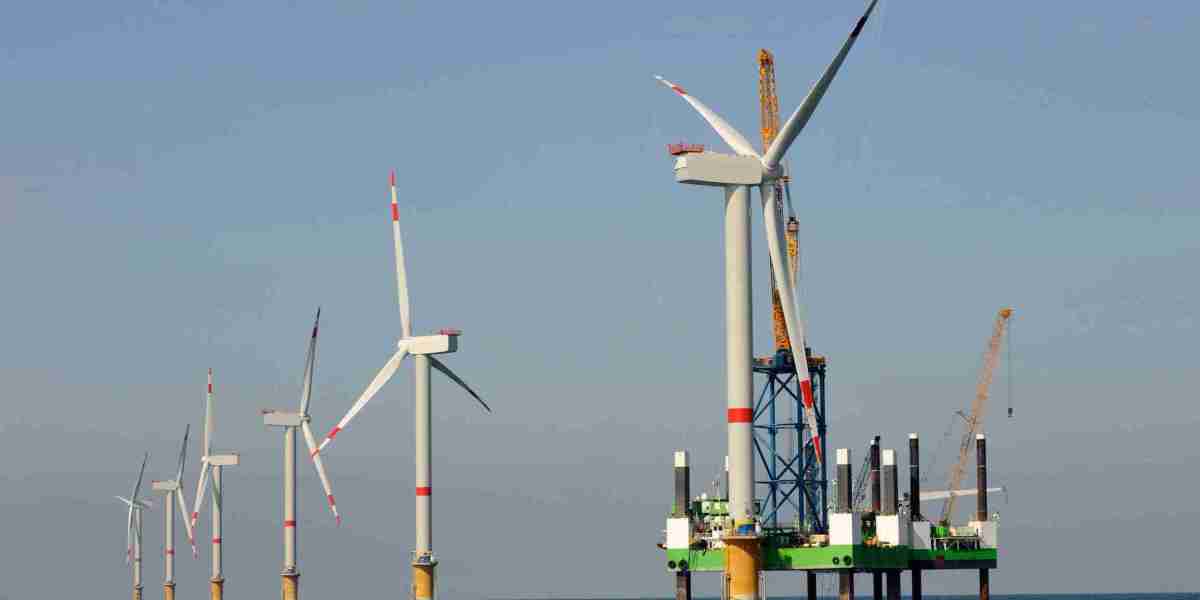The offshore wind energy market has seen significant growth in recent years, driven by the global shift towards renewable energy. However, this dynamic industry is not only expanding—it is also undergoing substantial disruptions that are reshaping its future. These disruptions come in various forms, from technological advancements to changing regulations and market dynamics. Understanding these transformative forces is essential for stakeholders aiming to navigate the evolving landscape of offshore wind energy. This article explores the key disruptions in the offshore wind energy market and their implications for the industry’s future.
Technological Innovations
Advanced Turbine Technology
One of the most significant disruptions in the offshore wind energy market is the rapid evolution of turbine technology. Innovations such as larger, more efficient turbines are revolutionizing the industry. Modern turbines, with increased capacity, are capable of generating more power with fewer units, reducing the overall cost of offshore wind projects. These advancements allow wind farms to be built in deeper waters, where wind resources are more abundant, and further from the coast, increasing the potential for power generation.
Floating Wind Turbines
Floating wind turbines represent a breakthrough in offshore wind energy. Unlike traditional fixed-bottom turbines, floating turbines can be deployed in deeper waters, opening up vast new areas for offshore wind development. These turbines are tethered to the seabed using floating platforms, enabling them to access areas previously considered unsuitable for wind farms. Floating wind technology is still in the early stages but has the potential to greatly expand the geographic footprint of offshore wind projects.
Digitalization and Automation
Digital technologies, including sensors, AI, and predictive maintenance systems, are disrupting the offshore wind industry by improving operational efficiency and reducing costs. For instance, smart sensors and data analytics enable real-time monitoring of turbines, allowing for predictive maintenance that minimizes downtime and reduces maintenance costs. Automation in the manufacturing and installation processes is also accelerating the pace of offshore wind farm development, reducing both capital and operational expenditures.
Regulatory Changes and Policy Shifts
Government Incentives and Renewable Energy Targets
As offshore wind energy becomes a key part of the global energy transition, government policies and incentives play a pivotal role in driving its growth. Many countries have implemented renewable energy targets that mandate a shift toward cleaner power sources, creating a favorable environment for offshore wind projects. In particular, subsidies, tax credits, and feed-in tariffs help mitigate the high upfront costs of offshore wind farms, enabling developers to secure financing and attract investment.
Carbon Pricing and Environmental Regulations
Governments are increasingly using carbon pricing mechanisms and stricter environmental regulations to accelerate the transition to renewable energy. These policies are disrupting the energy market by making fossil fuels more expensive and driving investments toward cleaner alternatives like offshore wind energy. Carbon taxes and emissions trading schemes make the economic case for offshore wind even more compelling, as the cost of emitting carbon dioxide increases, making renewable energy more competitive.
Market Liberalization and Public-Private Partnerships
In many regions, energy markets are being liberalized, creating new opportunities for private companies to enter the offshore wind sector. Public-private partnerships are becoming more common, with governments providing financial incentives and regulatory support while private developers take on the risk and investment responsibilities. These partnerships are transforming the way offshore wind energy projects are financed and executed, fostering innovation and reducing costs.
Supply Chain and Manufacturing Disruptions
Scaling Manufacturing Capacity
The rapid growth of the offshore wind industry has led to a surge in demand for turbines, subsea cables, and other components. To meet this demand, manufacturers must scale production capacity quickly and efficiently. Disruptions in the supply chain, such as shortages of raw materials or delays in manufacturing, can affect the timely delivery of components, impacting project timelines and costs. However, advances in manufacturing technologies and investments in new production facilities are helping to alleviate these challenges and increase supply chain resilience.
Local Manufacturing and Job Creation
A significant trend in the offshore wind industry is the push for local manufacturing and job creation. Governments and developers are increasingly focused on creating supply chains closer to offshore wind farm sites to reduce logistics costs and boost local economies. Local manufacturing not only supports regional economic development but also reduces the carbon footprint associated with transporting components across long distances. This shift is disrupting global supply chains and fostering new opportunities for regional players to enter the offshore wind sector.
Financial and Market Disruptions
Cost Reduction and Market Competitiveness
One of the most transformative disruptions in the offshore wind market is the significant reduction in costs over the past decade. Technological advancements, economies of scale, and increased competition among developers have all contributed to falling offshore wind costs. Offshore wind energy is now becoming cost-competitive with traditional forms of energy generation, including natural gas and coal. As a result, offshore wind is increasingly viewed as a viable, low-cost alternative for large-scale power generation.
Investment from Non-Traditional Energy Sectors
Another disruptive force in the offshore wind industry is the influx of investment from non-traditional energy sectors. Companies in industries such as technology, finance, and infrastructure are increasingly investing in offshore wind projects. These players bring fresh perspectives, technological expertise, and capital to the sector, accelerating innovation and expanding the financial backing for offshore wind projects. This trend is disrupting traditional energy markets and broadening the pool of investors in the renewable energy sector.
Environmental and Social Disruptions
Community Engagement and Social Acceptance
Public perception of offshore wind energy has a significant impact on its growth potential. In some regions, offshore wind projects have faced resistance from local communities, particularly those concerned about the visual impact of turbines on the coastline or the potential effects on marine life. To address these concerns, developers are increasingly engaging with local communities early in the planning process, incorporating social and environmental considerations into their projects. As a result, projects that prioritize community involvement and environmental stewardship are more likely to succeed.
Sustainability and Environmental Impact
Environmental sustainability is a critical concern for the offshore wind energy industry. As the sector grows, there is increasing pressure to ensure that offshore wind farms have minimal negative effects on marine ecosystems and local wildlife. Advances in environmental monitoring, turbine design, and project siting are helping to mitigate potential impacts on biodiversity. As environmental sustainability becomes a central focus, developers and governments are working together to ensure that offshore wind energy remains a green and sustainable power source.
Final Thoughts
The offshore wind energy market is undergoing significant disruptions that are transforming its trajectory. Technological innovations, regulatory changes, financial shifts, and evolving market dynamics are all contributing to the rapid growth and transformation of the sector. As offshore wind energy continues to evolve, stakeholders must adapt to these disruptions to remain competitive and maximize opportunities in the market. By embracing new technologies, fostering public-private partnerships, and ensuring environmental and social sustainability, the offshore wind energy industry can overcome challenges and become a key driver of the global transition to renewable energy.




